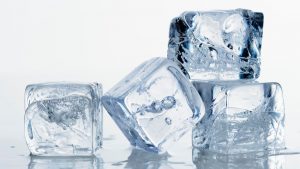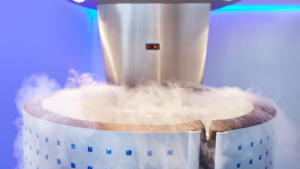If you’ve ever put water in the freezer, you’ll be quite aware what happens (it freezes). You might also be aware that the colder the conditions, the quicker it does this. And if you’re a human reading this article, then you’re probably aware that you’re mostly made of water—roughly 50-70%.

Interestingly, human bodies also contain things like bones, muscles, organs, fascia, and chemicals. One such chemical is called a cytokine. These guys play a role in wound healing, tissue repair, and inflammation. Without them, not only would we never heal, but things like muscle strength and hypertrophy would not happen.
Of course, like anything, too much of one thing can be bad. Like that 24-piece bucket of chicken. And with inflammation, too much of it for a prolonged period, can lead to disease or your immune system attacking itself when there is nothing for those cytokines to do.
Which is where cryotherapy, something that can be traced all the way back to the ancient Egyptians in 2500 BCE, comes in.
Cryotherapy in the 21st Century
Cryotherapy is something that is becoming increasingly popular. Whether it be dedicated chambers or baths in the comfort of one’s home, people love to seek out subzero temperatures to help their DOMS (delayed onset muscle soreness) and reduce inflammation. However, this is where things do come undone.

While it’s true that cold temperatures can reduce inflammation, unless you’re in a chronic state, and like I already pointed out in the second paragraph, you most likely want to be inflamed.
After all, if you exercise, you break down your body, you feel the effects of DOMS, you’re generally after some form of adaptation. Whether that be size, strength, endurance, speed, or just overall performance, inflammation is part of the process. So without it, not only can you be wasting your time filling your bath with ice cubes, or your money at the local clinic, you can be missing out on muscular and vascular gains.
When it comes to DOMS, other than temporary pain relief, there’s not too much to back the use of cryotherapy to speed it up. This is partly because DOMS is still not completely understood, but also because of counter points such as the most popular: you feel better when you’re warm.
Whether it be a hot shower or an adequate warm-up prior to exercise, your body functions better—physiologically and psychologically—when it’s warm. While some may claim that the cold makes them feel better, this might be an insight into something that is going on when jumping into a subzero environment.

In other words, and something that research points to, is that experiencing positive effects to cold therapy, might just be nothing more than a placebo. Which is not something that is bad, mind you. If you enjoy it, that’s great.
This article is not meant to cause you to become enraged about something you enjoy doing. Nor is it meant to tell you that making use of cryotherapy in small doses (ice pack, for example) can be beneficial to you. It’s only meant to make you consider what kind of effects cryotherapy might be having for you—especially if you are an athlete and you must be mindful about adaptation goals during on- and off-season, indulge in it frequently and for long periods of time, or rely upon it for recovery in comparison to eating and sleeping well.

